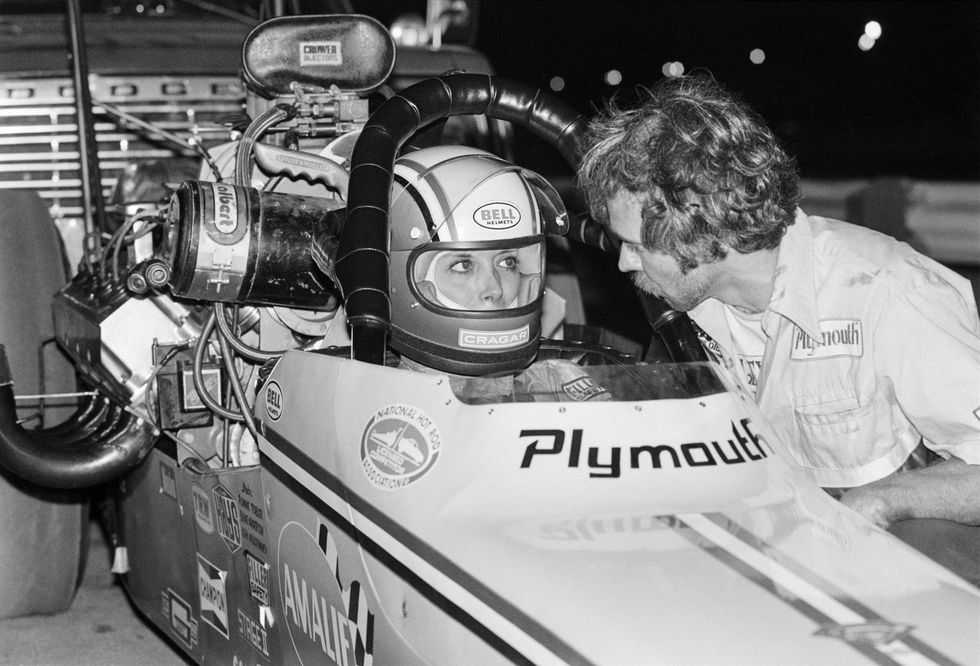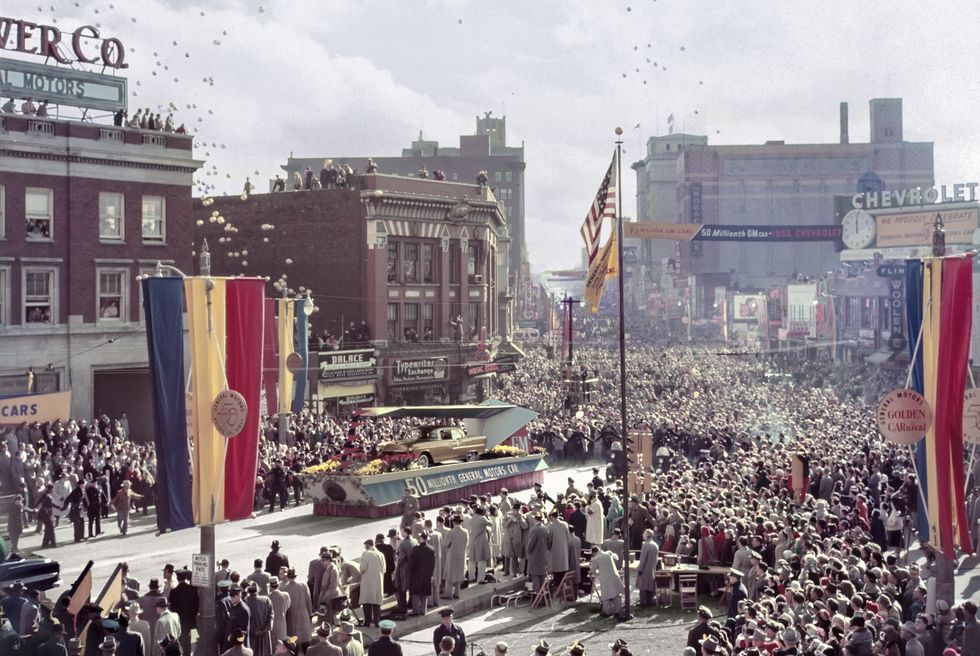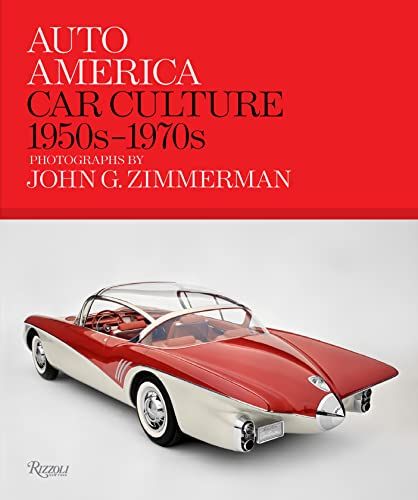'Auto America: Car Culture 1950s–1970s' Bears Witness to an Era of Dominance

Photographer John Zimmerman worked out of the Time-Life bureau in Detroit in the 1950s, covering the Big Three domestic automakers for that company’s flagship titles, Time and Life. He was thus both a direct witness to, and a documenter of, a profound era of industrial dominance, when Ford, GM, and Chrysler controlled 96 percent of the American car market and exuded an unparalleled influence on legislation, infrastructure, design, and society, commensurate with their industrial magnitude.
Now, a new book from famed art and design publisher Rizzoli, Auto America: Car Culture 1950s-1970s, collects many of Zimmerman’s photos from the era into a handsome –coffee-table compendium, providing a deep and well-executed peek into the era’s sensibility.
“At a time when self-driving vehicles and climate change are transforming driving, around the world, John’s pictures capture the optimism and even utopianism of a beloved period in American car culture,” Linda Zimmerman, John’s daughter, told Car and Driver. (John passed away in 2002; Linda and her brothers Darryl and Greg help manage his archive and were key in assembling the book.) “What better time for a refreshing look back at a golden age in American automotive culture?”
’56 lincoln premiere makes its grand entrance (from stage right) in detroit.
John G. Zimmerman
The book contains a wealth of glorious images of an industry at its zenith and includes public-facing shots of events like auto shows and benchmark celebrations, as well as behind-the-scenes footage of cars being designed, built, and tested. Zimmerman also worked for Sports Illustrated, so there are treasures from his coverage of mid-century motorsports as well.

Shirley Muldowney dominated the National Hot Rod Association in 1977, winning the first of three Top Fuel dragster championships that year.
John G. Zimmerman
Particularly compelling are forgotten newsworthy moments. “I was surprised by two stories my father photographed featuring General Motors,” Darryl Zimmerman told us. “The first was a catastrophic fire at a GM plant in Livonia, Michigan, in 1953. It was a state-of-the-art transmission plant that burned to the ground. I didn’t know about the fire before seeing my dad’s photographs. He arrived on the scene while the fire was still burning and captured both the human and physical toll, and we included a series of those photos in the book.”

Flint, Michigan—home of General Motors—turns out for the parade celebrating the production of GM’s 50 millionth car in 1954.
John G. Zimmerman
The second story featured General Motors’ production of its 50 millionth car, a record-breaking milestone. “Life asked my father to photograph GM’s jubilant, city-wide celebration in Flint, Michigan, in 1954,” according to Darryl. “The spectacular celebration in Flint showed GM’s dominance of the industry.”
Deciphering these images wasn’t always easy. “My brothers and I are by no means experts in automotive history, and that made it difficult at times for us to know what we were looking at in the photos,” Linda told us. “For instance, the story about GM’s 50 millionth car celebration was originally shot for Life magazine but never published. So the film was returned to my father years ago with no written documentation identifying the people, cars, and events in the photos.”
Auto America: Car Culture: 1950s-1970s–PHOTOGRAPHS BY JOHN G. ZIMMERMAN

Auto America: Car Culture: 1950s-1970s–PHOTOGRAPHS BY JOHN G. ZIMMERMAN
Now 20% Off
Still, the process of readying these vintage images for publication was likely the most difficult task the Zimmerman siblings faced. “All of the images published in Auto America were originally shot on film and had to be digitized as a first step,” Darryl said. “There are over 200 images, and roughly half of them are in color. The original color film, much of it dating from the 1950s and 1960s, becomes unstable over time so the colors faded and shifted dramatically in some cases. To restore the film to its original color, or improve it to contemporary color standards, meant sometimes spending hours retouching a single image.”
We’re certain this left the Zimmermans and their publishing team longing for the kind of quick-click filters found on contemporary social media sites. But flipping through the pages and seeing the popping carnation pink of a ’50s Lincoln, the shimmering yellow-gold of a ’50s Chevy, or the inky black of a ’50s Chrysler concept makes it clear that their efforts were worthwhile.







